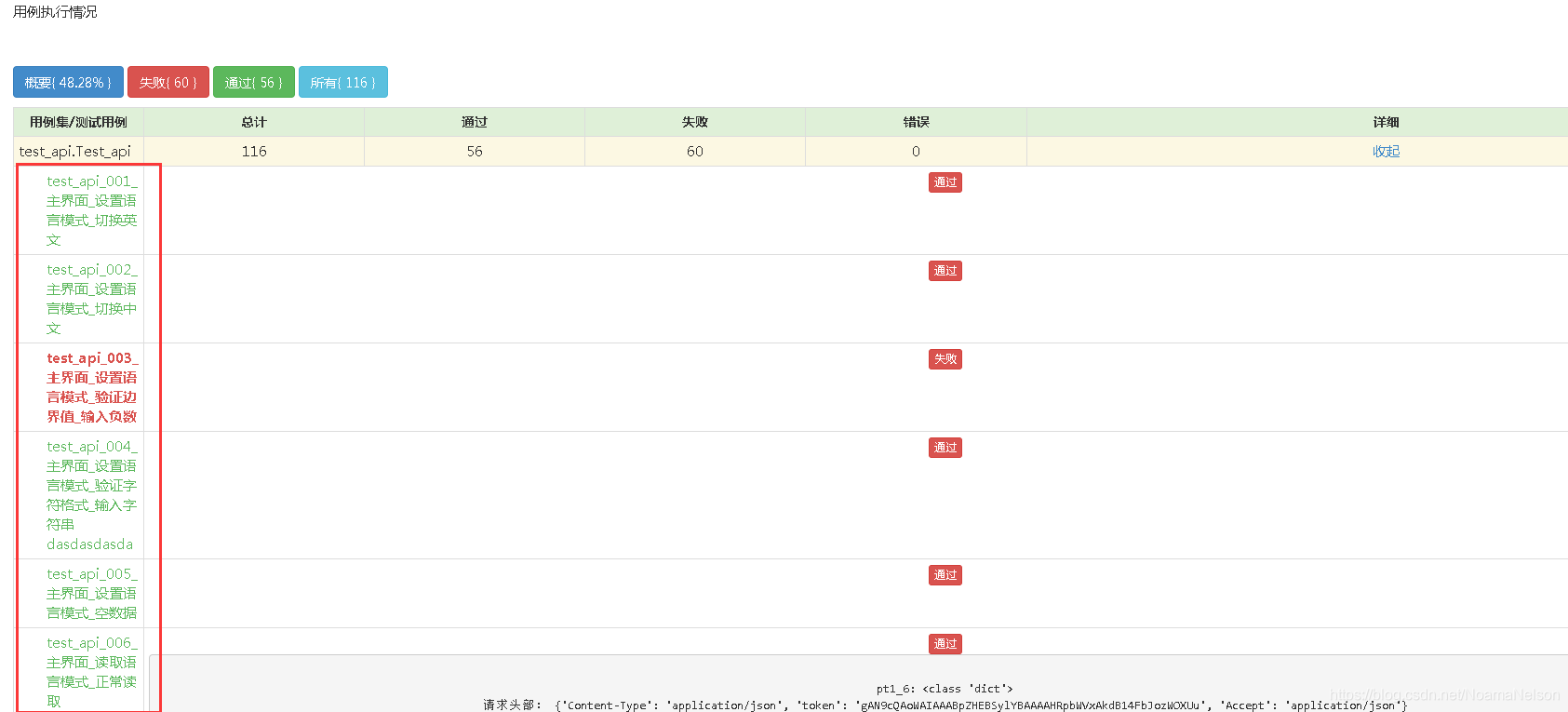unittest中使用ddt后生成的测试报告名称如何修改?(如test_api_0修改成test_api_0_titile)
【摘要】 修改前:Unittest使用ddt后生成的测试报告用例名称为:即就是,以“test_xx_数字”为格式的用例名称,感觉满足不了我们的测试需求,不够直观。那么怎么修改呢? 查看ddt源码def mk_test_name(name, value, index=0): """ Generate a new name for a test case. It will take t...
修改前:
Unittest使用ddt后生成的测试报告用例名称为:

即就是,以“test_xx_数字”为格式的用例名称,感觉满足不了我们的测试需求,不够直观。那么怎么修改呢?
查看ddt源码
def mk_test_name(name, value, index=0):
"""
Generate a new name for a test case.
It will take the original test name and append an ordinal index and a
string representation of the value, and convert the result into a valid
python identifier by replacing extraneous characters with ``_``.
We avoid doing str(value) if dealing with non-trivial values.
The problem is possible different names with different runs, e.g.
different order of dictionary keys (see PYTHONHASHSEED) or dealing
with mock objects.
Trivial scalar values are passed as is.
A "trivial" value is a plain scalar, or a tuple or list consisting
only of trivial values.
"""
# Add zeros before index to keep order
index = "{0:0{1}}".format(index + 1, index_len, )
if not is_trivial(value):
return "{0}_{1}".format(name, index)
try:
value = str(value)
except UnicodeEncodeError:
# fallback for python2
value = value.encode('ascii', 'backslashreplace')
test_name = "{0}_{1}_{2}".format(name, index, value)
return re.sub(r'\W|^(?=\d)', '_', test_name)
- 从方法mk_test_name中,我们看到该方法的描述是“Generate a new name for a test case.”,即就是为测试用例创建一个名称,那么改这个方法就行了
- 方法中返回的是name和index,即"{0}_{1}".format(name, index)
- 那么就明白了,我们改返回的内容就行了
修改后
def mk_test_name(name, value, index=0):
"""
Generate a new name for a test case.
It will take the original test name and append an ordinal index and a
string representation of the value, and convert the result into a valid
python identifier by replacing extraneous characters with ``_``.
We avoid doing str(value) if dealing with non-trivial values.
The problem is possible different names with different runs, e.g.
different order of dictionary keys (see PYTHONHASHSEED) or dealing
with mock objects.
Trivial scalar values are passed as is.
A "trivial" value is a plain scalar, or a tuple or list consisting
only of trivial values.
"""
# Add zeros before index to keep order
index = "{0:0{1}}".format(index + 1, index_len, )
if not is_trivial(value) and type(value) is not dict: # 增加的地方,增加value的字典判断
return "{0}_{1}_{2}".format(name, index, value.name) # 修改的地方,增加返回的值
if type(value) is dict: # 增加的地方
try: # 增加的地方
value = value["name"] + "_" + value["function"] # 增加的地方,name和function必须是execl用例中整正存在的表头,这里我是把两个表头合并了(name是我表格中接口的名称,function是表格中接口的功能描述)
except: # 增加的地方
return "{0}_{1}".format(name.index) # 增加的地方
try:
value = str(value)
except UnicodeEncodeError:
# fallback for python2
value = value.encode('ascii', 'backslashreplace')
test_name = "{0}_{1}_{2}".format(name, index, value) # 修改的地方
return re.sub(r'\W|^(?=\d)', '_', test_name)


【声明】本内容来自华为云开发者社区博主,不代表华为云及华为云开发者社区的观点和立场。转载时必须标注文章的来源(华为云社区)、文章链接、文章作者等基本信息,否则作者和本社区有权追究责任。如果您发现本社区中有涉嫌抄袭的内容,欢迎发送邮件进行举报,并提供相关证据,一经查实,本社区将立刻删除涉嫌侵权内容,举报邮箱:
cloudbbs@huaweicloud.com
- 点赞
- 收藏
- 关注作者


评论(0)